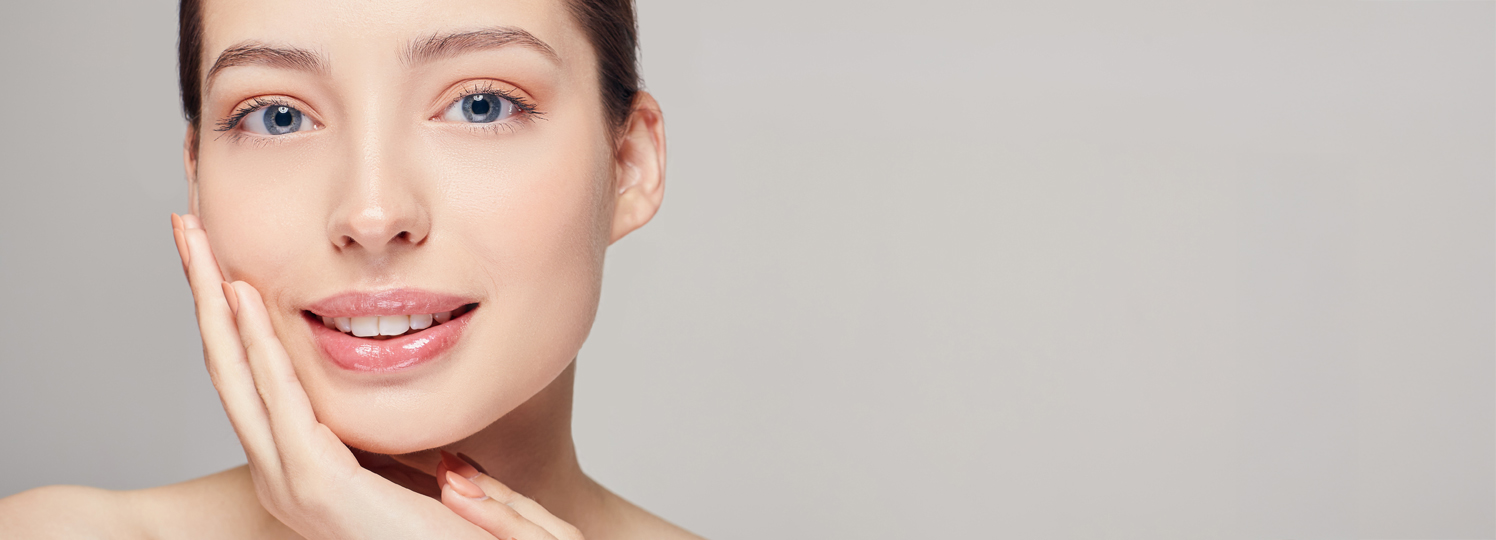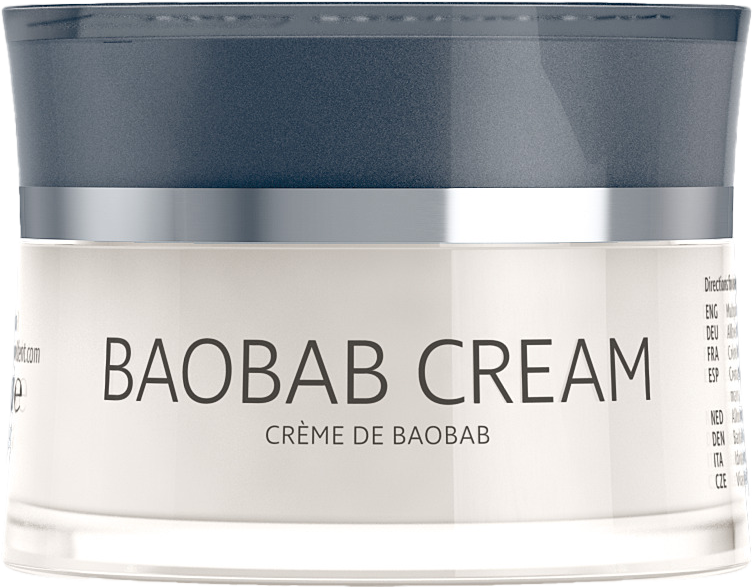

Facial Care


Facial Care
Lightweight but nourishing W/O emulsion with a high concentration of baobab oil, from the seed of the baobab fruit. The vitamin-rich oil with omega fatty acids 3, 6 and 9 is easily absorbed into the skin. In combination with apricot kernel oil and jojoba oil, skin hydration and skin elasticity are increased. The product is suitable as a face cream for all skin types and also cares for dry and stressed hands. Can be applied as a universal cream alone or in combination with a MultiActive liposome preparation: First apply one of the variants of LIPOSOME MULTI ACTIVE, then BAOBAB CREAM.
Application: To achieve the best success with DR. BAUMANN facial care, before applying an appropriate DR. BAUMANN cream, one of the LIPOSOME MULTI ACTIVE products (see basic care) should be applied.
30 ml Jar
Art.-Nr. 1119
Aqua, Adansonia Oil, Simmondsia Chinensis Oil, Prunus Armeniaca Kernel Oil, Butylene Glycol, Urea, Polyglyceryl-2 Dipolyhydroxystearate, C18-36 Acid Triglycerides, Sodium Lactate, Diisostearoyl Polyglyceryl-3 Dimer Dilinoleate, D-alpha Tocopheryl Acetate, D-mixed-Tocopherols, Retinyl Palmitate, Lactic Acid, Allantoin, Magnesium Sulfate
Aqua:
Water. It accounts for around 65% of the weight of the human body and is therefore of fundamental importance for bodily functions, including those of the skin. In many cosmetic products (aqueous solutions, cleansers, emulsions), water is the ingredient with the largest proportion of the formulation in terms of quantity and forms the basis of the aqueous phase in emulsions. Water is a good solvent for polar (hydrophilic) substances such as alcohols, water-soluble vitamins or salts. For use in cosmetic products, the water used is generally pre-treated to remove microorganisms that could lead to spoilage of the product or dissolved salts that may impair the stability of emulsions or gels (sterilization and desalination).
Adansonia Oil:
Baobab oil is extracted from the fruit of the African baobab tree. Rich in natural vitamins, it has excellent skin care properties, especially for dry and barrier-damaged skin.
Simmondsia Chinensis Oil:
Some kind of oil
Prunus Armeniaca Kernel Oil:
Apricot kernel oil, rich in monounsaturated and diunsaturated fatty acids
Butylene Glycol:
Solvent with moisturizing effect on the skin, very good compatibility, should be preferred to propylene glycol in products used daily
Urea:
The water-soluble urea is used in numerous cosmetic products. Urea is a component of the natural moisturising factors of the horny layer (content between 7 % and 12 %; up to half lower in chronically dry skin) and has a high water-binding capacity. It contributes to sustained moisturisation of the skin and reduces transepidermal water loss. Urea has a keratoplastic effect, in higher concentrations it has a keratolytic effect and is therefore also used in the care of skin affected by psoriasis or atopic dermatitis (neurodermatitis). Urea is also able to reduce the irritating potential of surfactants.
Polyglyceryl-2 Dipolyhydroxystearate:
W/O emulsifier, is made from vegetable fats.
C18-36 Acid Triglycerides:
High-melting wax made from natural raw materials, consistency enhancer
Sodium Lactate:
Sodium salt of lactic acid: Has a moisturising effect on the skin, with the physiological pH value of the skin averaging 5.5. Important component of the natural moisturising factor (NMF) and the acid mantle of the skin.
Diisostearoyl Polyglyceryl-3 Dimer Dilinoleate:
Emulsifier for W/O emulsions, is obtained from the renewable, vegetable raw materials glycerine and fatty acids, very good skin compatibility
D-alpha Tocopheryl Acetate:
Natural vitamin E acetate; storage form in the skin, is converted into the active form by dissolving the acetate bond; antioxidant with skin-protecting properties, e.g. against UV radiation, retains moisture, delays premature skin ageing
D-mixed-Tocopherols:
Is the name of a mixture of natural tocopherols (vitamin E; D-alpha-, beta-, gamma- and delta-tocopherol). Vitamin E is the most important skin protection vitamin, which protects the skin from UV rays and oxygen radicals.
Retinyl Palmitate:
Is the storage form of vitamin A, which is converted into free vitamin A in the skin. It stimulates cell division and therefore has a strong regenerative effect, particularly on pre-aged skin and with prolonged use. Studies have even shown an increase in the collagen content of the skin, a slight reduction in wrinkles and an increase in skin elasticity.
Lactic Acid:
Lactic acid. Occurs as a metabolic product in the body and on the skin, has a peeling effect on the horny layer in higher concentrations and at a low pH value of 2 to 3, supports the moisture content in buffered form (physiological pH value of the skin approx. 5.5) and preserves the skin's protective acid mantle.
Allantoin:
Allantoin is a body-identical, water-soluble substance and is chemically related to urea. It is found in various plants but is now produced synthetically for use in cosmetics. Its most important property is the stimulation of new cell formation. It promotes collagen formation, skin regeneration and wound healing, stimulates desquamation, smoothes the skin and can have a soothing effect on atopic dermatitis.
Magnesium Sulfate:
Epsom salt, stabilizer in W/O formulations